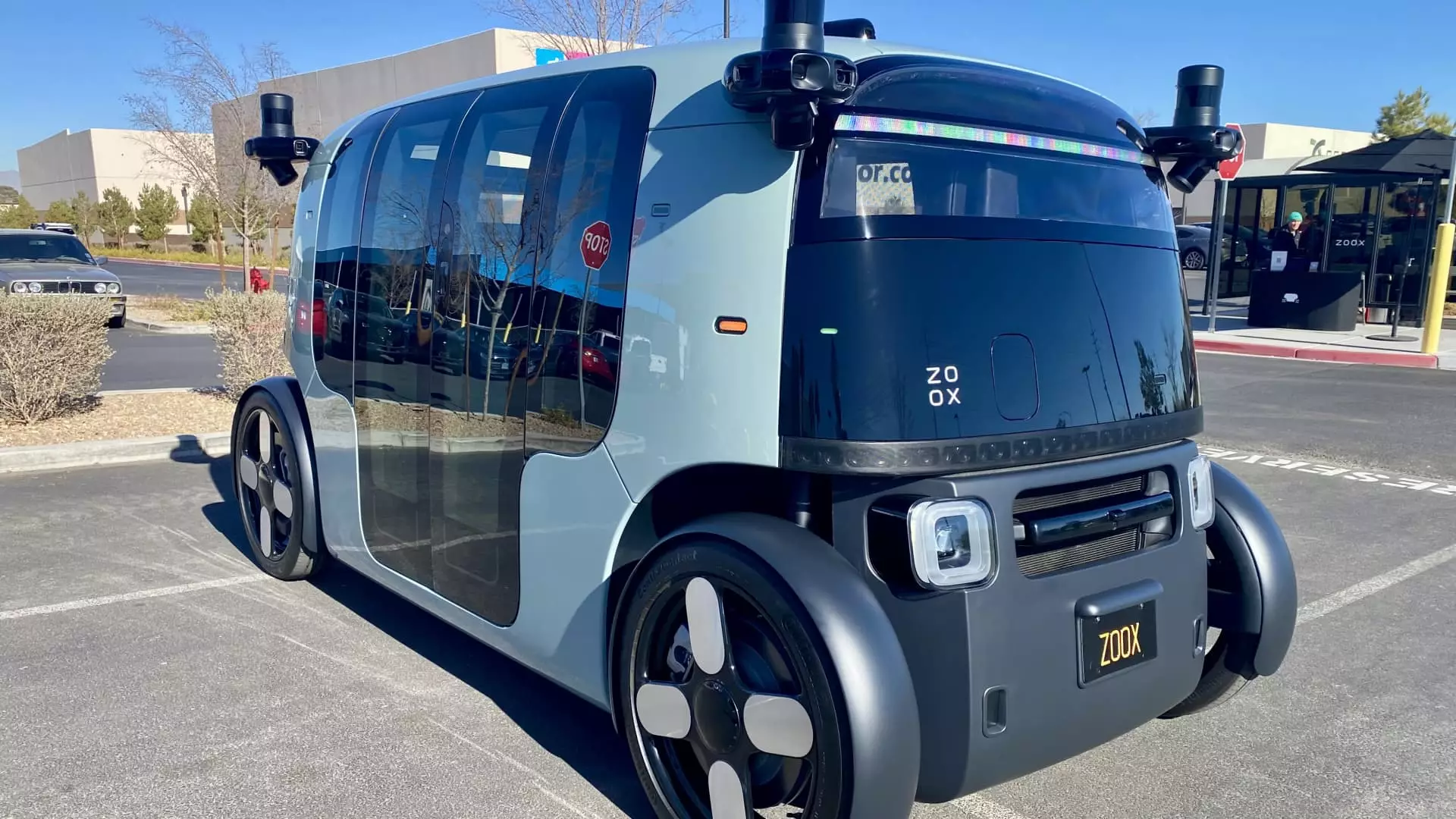As we step into an era where the automotive landscape is rapidly evolving, Amazon’s autonomous vehicle subsidiary, Zoox, stands at a crucial juncture in its journey. The company, which has garnered attention for its unique robotaxi design and strategic advancements, is gearing up to expand its operational capabilities significantly in 2023. According to co-founder and Chief Technology Officer Jesse Levinson, Zoox is poised to start offering rides to the public very soon, with aspirations to broaden its service areas and increase its fleet size from the modest few dozen vehicles currently operational. As Levinson shares during a test ride around the bustling streets of Las Vegas, the progress thus far has been promising, but the road ahead remains fraught with challenges.
It is important to acknowledge that Zoox’s ambitions come at a time when investor enthusiasm for autonomous vehicles has dipped considerably. Legacy manufacturers like General Motors, Ford, and Volkswagen have dismantled their self-driving units, signaling an industry-wide reevaluation of the previously overwhelming optimism that characterized the market a few years ago. In this swirling landscape of skepticism, Zoox’s position is compelling yet precarious. Acquired by Amazon for $1.3 billion in 2020, the ten-year-old start-up is striving to carve out a niche amid shifting market dynamics.
The company’s state-of-the-art robotaxis are designed from the ground up to operate autonomously, marking a distinct departure from competitors like Waymo, which has adapted existing vehicles for self-driving missions. Critics have a mixed bag of sentiments about the aesthetics of Zoox’s vehicles, with descriptions ranging from “boxes” to “toasters.” However, the unique design serves a functional purpose, fostering a passenger-centric experience devoid of manual controls, such as traditional steering mechanisms or pedals.
Testing the Waters: Strategic City Rollouts
Currently undergoing real-world testing in Las Vegas, San Francisco, and Foster City, California—its headquarters—Zoox is setting its sights on Las Vegas as its inaugural commercial market. The company plans to launch an “Early Rider Program” in the vibrant city shortly, subsequently paving the way for a broader public rollout later in the year. The strategic decision to begin in Las Vegas is strategic; the city’s environment is conducive to autonomous vehicle trials, filled with tourists eager to embrace cutting-edge transport options. However, other cities, such as Miami and Austin, are also on the radar, albeit without a clear timeline for entry.
While driving an autonomous vehicle around the glitzy Las Vegas Strip, observers note the robotaxi’s performance—competent in making turns and maintaining assertive yet cautious driving behavior. Yet, there are moments that raise eyebrows, such as its decision-making when faced with a lengthy line of vehicles. Levinson emphasizes the importance of striking a delicate balance between assertiveness and caution, acknowledging that while autonomous vehicles must adhere strictly to traffic laws, they cannot afford to be overly conservative as it might complicate interactions with human drivers.
Despite these challenges, Zoox is progressing steadily, prioritizing safety as a core pillar of its expansion strategy. While Levinson refrains from declaring commercially meaningful projections for this year, he does express optimism about the value that customers will derive from the service as it becomes operational.
As Zoox strives toward commercialization, it faces not just technological hurdles but also questions surrounding a viable business model. Experts like Sam Abuelsamid of Telemetry Insights express cautious optimism regarding the technology while questioning the scalability and profitability of Zoox’s approach. The vehicle’s form factor, deemed ideal for urban transport, could potentially offer a more seamless passenger experience if done right. However, amid the successes of Waymo and the struggles faced by GM’s Cruise after its recent setback, the path toward a sustainable operating model remains uncertain.
The autopilot landscape has proven to be more complex than anticipated, culminating in substantial investments and a longer-than-expected timeline for profitability. While companies like Waymo have gradually built a strong foothold in major markets, Zoox’s ascent will depend on more than just technological prowess—it will require innovative solutions to traditional transport dilemmas, including regulatory hurdles and high operational costs.
The arena of autonomous vehicles is undeniably competitive, and as Zoox attempts to establish itself within this rapidly transforming sector, it faces dual challenges: evolving public expectations and fierce competition from established players. With careful navigation, strategic expansion, and a focus on consumer-centric design, Zoox has the potential to redefine urban transportation. However, as the experiences of other companies illustrate, understanding and overcoming the complexities of commercialization will be crucial for any success it aims to achieve. The coming months will be critical in determining whether Zoox can turn its ambitious vision into a realized reality.

